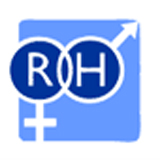
Summary
Premature birth is the world’s leading cause of neonatal mortality with worldwide estimates indicating 11.1% of all live births were preterm in 2010. Preterm birth rates are increasing in most countries with continual differences in survival rates amongst rich and poor countries. Preterm birth is currently an important unresolved global issue with research efforts focusing on uterine quiescence and activation, the ‘omics’ approaches and implementation science in order to reduce the incidence and increase survival rates of preterm babies. Reproductive Health Journal has published a supplement entitled Born Too Soon which addresses factors in the preconception and pregnancy period which may increase the risk of preterm birth and also outlines potential interventions which may reduce preterm birth rates and improve survival of preterm babies by as much as 84% annually. This is critical in order to achieve the Millennium Development Goal (MDG 4) for child survival by 2015 and beyond.
The Born Too Soon supplement is jointly funded by Save the Children’s Saving Newborn Lives programme through a grant from The Bill and Melinda Gates Foundation and March of Dimes and published in collaboration with the Partnership for Maternal, Newborn and Child Health and the World Health Organization (WHO).
The original articles were published as PDFs in the WHO Report “Born too soon: the global action report on preterm birth (ISBN 978 92 4 150343 30), which involved collaboration from more than 50 organizations. Articles have been reformatted for journal publication and have undergone peer review according to Reproductive Health’s standard process for supplements, and may feature some variations in content when compared to the original report.
This co-publication makes the articles available to the community in a full-text format. The Supplement Editors declare that they have no competing interests.